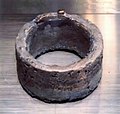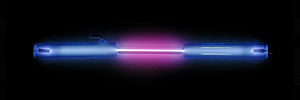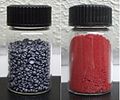Five isotopes occur naturally, four of which are stable. The metal and its alloys are mainly used as a refractory and opacifier; pure zirconium plays...
48 KB (5,382 words) - 03:21, 16 September 2024
Group 4 element (section Zirconium)
metals in the periodic table. It contains the four elements titanium (Ti), zirconium (Zr), hafnium (Hf), and rutherfordium (Rf). The group is also called the...
35 KB (4,229 words) - 23:06, 11 September 2024
Plutonium (section Isotopes and nucleosynthesis)
to power some spacecraft. Plutonium isotopes are expensive and inconvenient to separate, so particular isotopes are usually manufactured in specialized...
139 KB (14,950 words) - 03:21, 5 October 2024
Uranium zirconium hydride (UZrH), a combination of uranium hydride and zirconium(II) hydride, is used as the fuel in TRIGA reactors. UZrH fuel is used...
1 KB (103 words) - 14:24, 8 August 2024
Praseodymium (section Isotopes)
isotopes lighter than 141Pr is positron emission or electron capture to isotopes of cerium, while that of heavier isotopes is beta decay to isotopes of...
37 KB (4,830 words) - 15:05, 16 September 2024
concentrations of fissile isotopes in order to sustain a chain reaction. They are also capable of breeding fissile isotopes from fertile materials; a...
70 KB (9,856 words) - 00:15, 20 August 2024

























